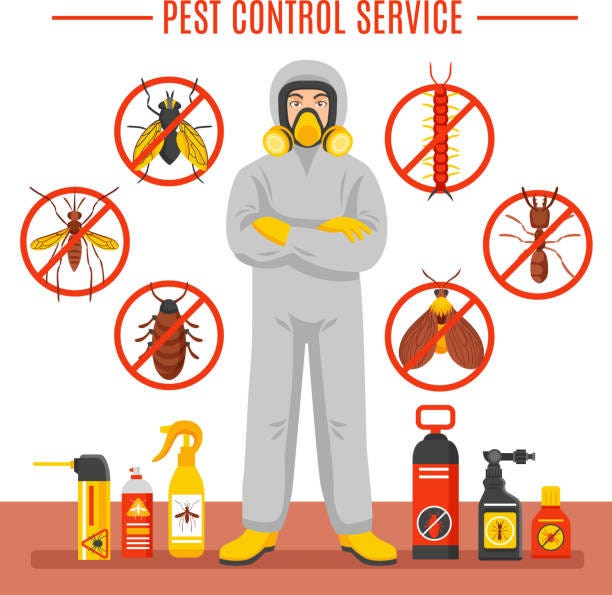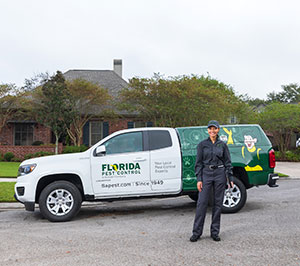Expert A1 Charlotte Bed Bug Exterminator - Top Quality Service Ensured
Wiki Article
Bed Pest Treatment Failure: Contrasting Chemical Vs. Non-Chemical Solutions
In the world of insect control, specifically when managing the persistent problem of bed insects, the selection in between chemical and non-chemical therapy remedies can be a critical one. Both strategies supply unique advantages and drawbacks, affecting variables such as performance, safety considerations, and total cost. By checking out the nuanced details of each approach, a more clear understanding of which path to seek in resolving a bed insect problem can be acquired.Performance of Chemical Treatments
Chemical therapies for bed insect problems have actually been commonly acknowledged for their powerful and fast effectiveness in removing these parasites. When considering the effectiveness of chemical treatments, it is essential to understand that they can offer a comprehensive and fast solution to a bed insect issue.Additionally, chemical therapies have the advantage of using recurring effects, suggesting that they can proceed to get rid of bed pests also after the preliminary application. This recurring activity is particularly valuable in combating any prospective re-infestations. Furthermore, the fast activity of chemical therapies can bring alleviation to individuals dealing with extreme bed bug invasions, enabling them to restore control of their home quickly.
Security Interest In Chemical Solutions
One vital facet that calls for cautious consideration when making use of chemical options for bed bug therapy is making certain the safety and security of passengers and the atmosphere. Exposure to certain chemicals used in bed pest therapies can lead to respiratory system issues, skin inflammation, or various other unfavorable reactions, particularly in individuals with pre-existing problems or sensitivities.Additionally, the environmental influence of chemical options is another significant factor to consider. Some chemicals utilized in bed insect treatments may be hazardous to advantageous bugs, wild animals, and ecosystems if they leach into the soil or water systems. It is necessary to make use of chemical treatments sensibly, adhering to safety guidelines, and thinking about much less harmful alternatives to minimize these threats and make sure the risk-free and effective monitoring of bed insect invasions.
Benefits of Non-Chemical Methods
Considering the potential safety and security problems and environmental effect associated with chemical solutions for bed pest treatment, exploring non-chemical approaches offers an encouraging option with several distinct advantages. Non-chemical therapies are environmentally friendly, as they do not add to air or water pollution, making them a lasting option for parasite control.Furthermore, non-chemical remedies can be new home pest control efficient in targeting bed pests, consisting of hard-to-reach areas where chemical treatments may not pass through. Methods such as heat therapy, vacuuming, steam cleansing, and mattress encasements provide comprehensive eradication without using damaging chemicals. Moreover, non-chemical techniques can be less turbulent, requiring marginal prep work and permitting quicker reentry right into treated areas. In general, choosing non-chemical bed bug therapy methods not just prioritizes security and environmental management however likewise makes sure reliable and thorough insect control.
Limitations of Non-Chemical Treatments

Furthermore, non-chemical therapies typically call for multiple applications to attain successful obliteration. This can be taxing and may not always ensure complete removal of all bed pests and their eggs, specifically in hard-to-reach or surprise places.
Furthermore, the success of non-chemical therapies heavily relies upon proper execution and thoroughness, which can be challenging for individuals without professional know-how. Inadequate application of non-chemical techniques may cause incomplete eradication, bring about persistent invasions and the requirement for added therapies.
Consequently, while non-chemical therapies have their benefits, it is necessary to view it acknowledge these restrictions and consider them when figuring out one of the most efficient method for handling bed insect infestations.
Expense Comparison: Chemical Vs. Non-Chemical Options
Offered the constraints connected with non-chemical therapies, a necessary facet to evaluate in the context of bed bug monitoring is the cost comparison in between chemical and non-chemical options. In comparison, non-chemical therapies like heat therapy or steam can be a lot more expensive, with prices ranging from $1,000 to $6,000 for a whole home. While the first expense of chemical treatments may seem reduced, multiple therapies may be required to totally remove the problem, potentially enhancing the general cost.Final Thought

Considering the potential security issues and environmental impact linked with chemical solutions for bed pest therapy, discovering non-chemical strategies offers an encouraging alternative with numerous unique advantages.Offered the limitations linked with non-chemical treatments, a vital aspect to review in the context of bed bug administration is the expense comparison between chemical and non-chemical alternatives. In contrast, non-chemical treatments like heat therapy or vapor can be extra pricey, with costs varying from $1,000 to $6,000 for an entire home. While the preliminary expense of chemical treatments may seem lower, numerous treatments might be called for to fully eliminate the invasion, possibly boosting the general price.In verdict, when contrasting chemical and more information non-chemical bed pest therapy alternatives, it is crucial to consider performance, safety and security, advantages, constraints, and price.
Report this wiki page